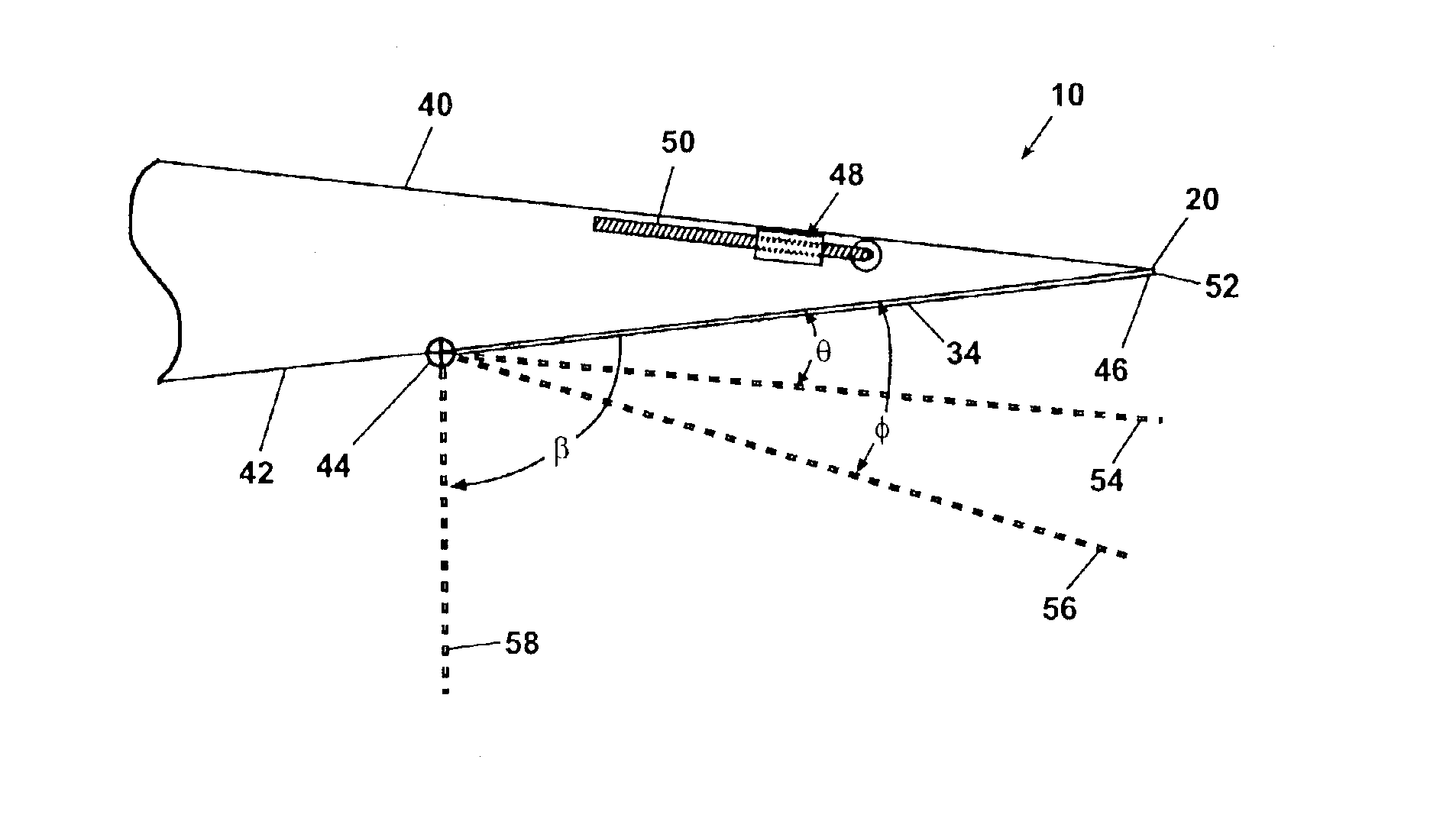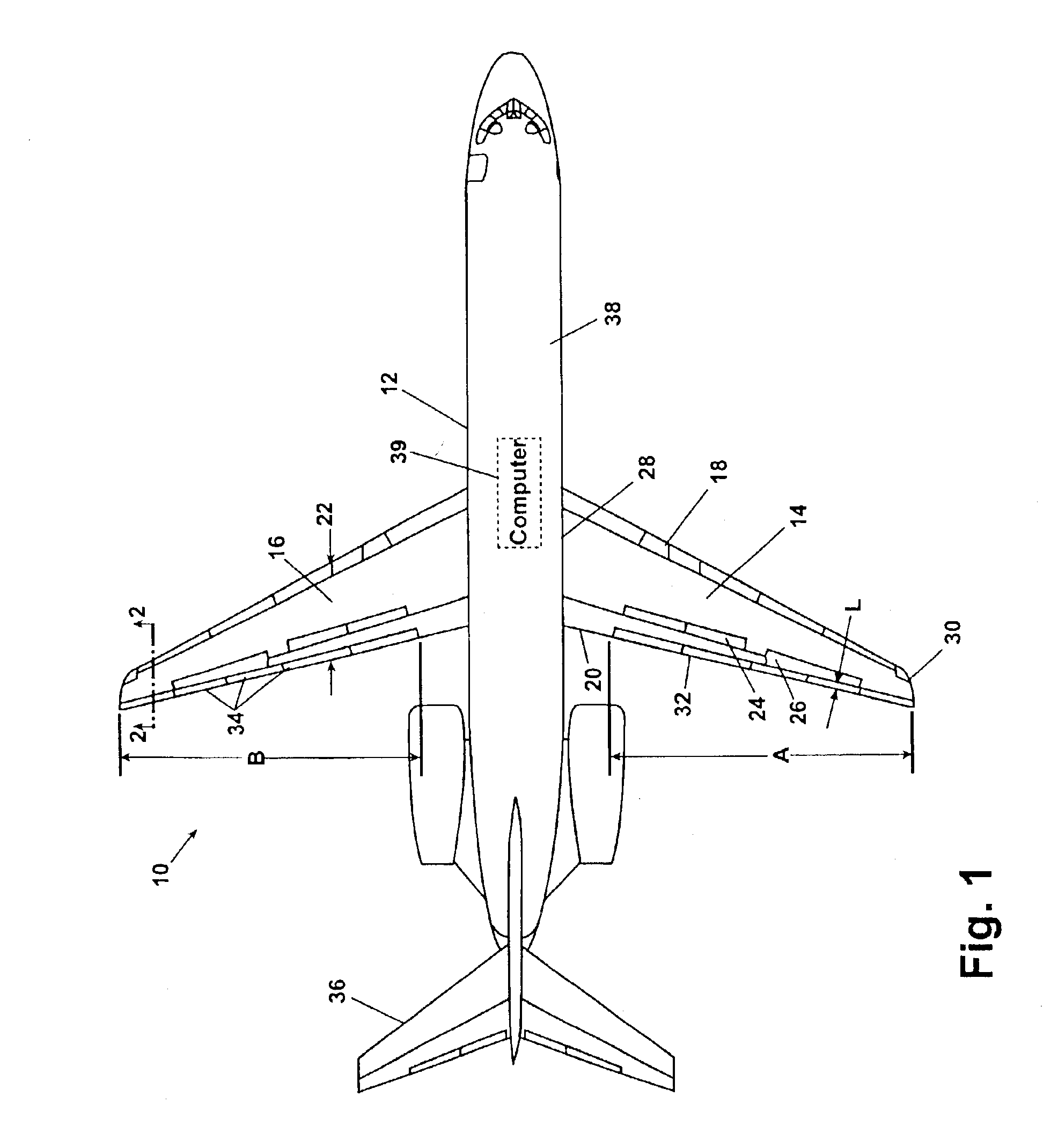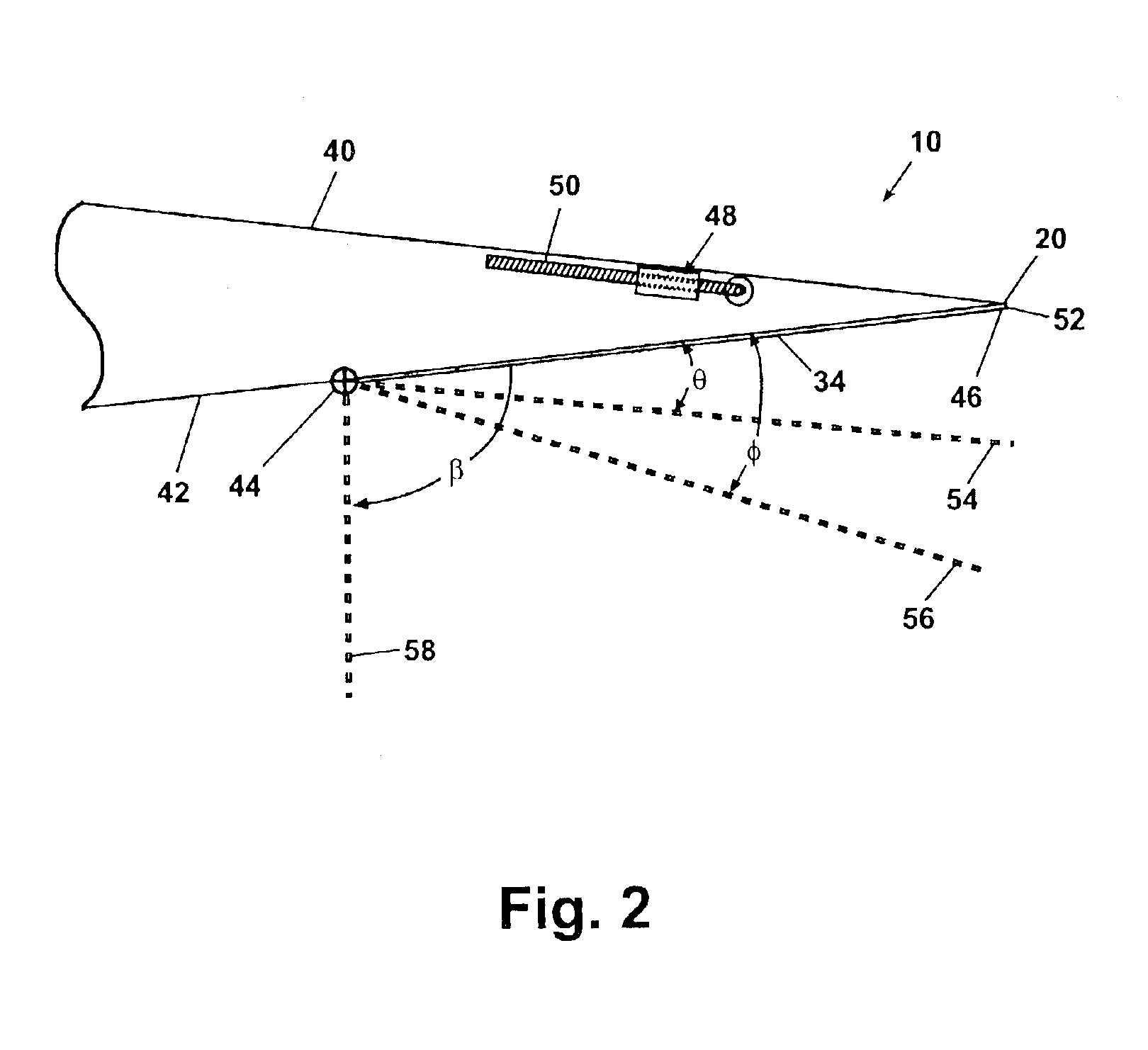Variable trailing edge geometry and spanload control
a technology of trailing edge geometry and spanload control, which is applied in the direction of automatic actuation, canard-type aircraft, and efficient propulsion technologies, etc., can solve the problems of increasing drag when operating outside the normal operating speed, not efficient for optimizing the wing span load distribution, and not being able to achieve the optimal angle of operation
- Summary
- Abstract
- Description
- Claims
- Application Information
AI Technical Summary
Benefits of technology
Problems solved by technology
Method used
Image
Examples
Embodiment Construction
The following description of the preferred embodiment(s) is merely exemplary in nature and is in no way intended to limit the invention, its application, or uses. Reference to use on an aircraft wing is generally made herein, however, the invention is not limited to aircraft or wing use.
Referring to FIG. 1, a variable trailing edge system 10 in accordance with a preferred embodiment of the present invention is shown. An aircraft 12 includes a starboard wing 14 and a port wing 16. Each of the wings include a leading edge 18 and a trailing edge 20. A chord length 22 is identified for the port wing 16, but is common to either wing. A plurality of chord lengths 22 can exist for a given wing because the chord length 22 is determined at a cross section taken through the wing, and the tapering wing design of many commercial aircraft (such as the 2-engine design shown in FIG. 1) provides a changing cross section as the wing tapers down in length from the inboard end to the outboard end. Com...
PUM
 Login to View More
Login to View More Abstract
Description
Claims
Application Information
 Login to View More
Login to View More - R&D
- Intellectual Property
- Life Sciences
- Materials
- Tech Scout
- Unparalleled Data Quality
- Higher Quality Content
- 60% Fewer Hallucinations
Browse by: Latest US Patents, China's latest patents, Technical Efficacy Thesaurus, Application Domain, Technology Topic, Popular Technical Reports.
© 2025 PatSnap. All rights reserved.Legal|Privacy policy|Modern Slavery Act Transparency Statement|Sitemap|About US| Contact US: help@patsnap.com



